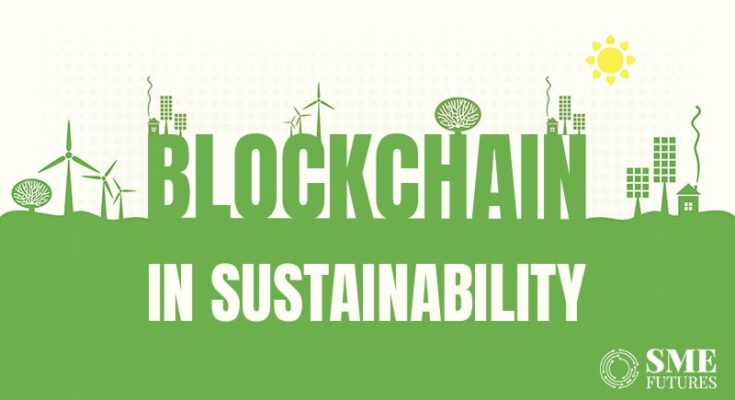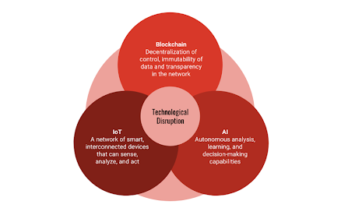As the world grapples with the pressing challenges of climate change and environmental degradation, the need for sustainable solutions has never been more urgent. Blockchain technology has emerged as a powerful tool that can drive sustainability efforts across various sectors. This article explores the intersection of blockchain and sustainability, highlighting how this innovative technology can pave the way for greener solutions.
Understanding Blockchain Technology
Blockchain is a decentralized, distributed ledger technology that securely records transactions across multiple computers. Each transaction is grouped into a block, which is then added to a chain of previous transactions, creating a transparent and tamper-proof record. The key features of blockchain technology—transparency, security, and immutability—make it an ideal candidate for addressing sustainability challenges.
The Role of Blockchain in Promoting Sustainability
One of the most significant applications of blockchain technology in sustainability is enhancing supply chain transparency. By providing a secure and immutable record of every transaction, blockchain allows consumers to trace the origin of products and verify their sustainability claims. For example, companies can use blockchain to track the sourcing of raw materials, ensuring they are ethically and sustainably sourced. This transparency can help consumers make informed choices and encourage businesses to adopt more sustainable practices.
- Carbon Credit Trading
Blockchain technology can revolutionize the carbon credit trading market by providing a transparent and efficient platform for buying and selling carbon credits. By using blockchain, companies can track their carbon emissions and purchase carbon credits to offset their environmental impact. This system can enhance accountability and ensure that carbon credits are not double-counted, ultimately promoting a more effective approach to reducing greenhouse gas emissions.
- Decentralized Renewable Energy
The integration of blockchain technology with renewable energy sources can facilitate decentralized energy trading. Individuals and businesses can use blockchain to buy and sell excess energy generated from renewable sources, such as solar panels or wind turbines. This peer-to-peer energy trading model can empower consumers, reduce reliance on fossil fuels, and promote the use of clean energy. By enabling a more efficient energy distribution system, blockchain can contribute to a greener energy future.
- Waste Management Solutions
Blockchain technology can also play a crucial role in improving waste management practices. By providing a transparent record of waste disposal and recycling processes, blockchain can help ensure that waste is managed responsibly. For instance, companies can use blockchain to track the lifecycle of products, from production to disposal, ensuring that materials are recycled or disposed of properly. This can lead to reduced waste and a more circular economy.
- Sustainable Agriculture
In the agricultural sector, blockchain technology can enhance sustainability by improving traceability and accountability. Farmers can use blockchain to record and share data about their farming practices, such as pesticide use, water consumption, and soil health. This information can help consumers make informed choices about the food they purchase and encourage farmers to adopt more sustainable practices. Additionally, blockchain can facilitate fair trade by ensuring that farmers receive fair compensation for their products.
Challenges and Considerations
While the potential of blockchain technology in promoting sustainability is significant, several challenges must be addressed:
-
Energy Consumption: One of the primary concerns surrounding blockchain technology is its energy consumption, particularly in proof-of-work systems like Bitcoin. To fully realize the sustainability potential of blockchain, it is essential to develop more energy-efficient consensus mechanisms, such as proof-of-stake.
-
Scalability: As the adoption of blockchain technology grows, scalability becomes a critical issue. Ensuring that blockchain networks can handle a large volume of transactions without compromising speed or efficiency is vital for widespread implementation.
-
Regulatory Frameworks: The integration of blockchain technology into sustainability initiatives may require new regulatory frameworks. Policymakers must work to create guidelines that promote innovation while ensuring consumer protection and environmental accountability.
-
Public Awareness and Education: For blockchain to be effectively utilized in sustainability efforts, public awareness and understanding of the technology are essential. Educational initiatives can help stakeholders recognize the benefits of blockchain and encourage its adoption in sustainable practices.
Future Outlook
The future of blockchain and sustainability is promising. As more organizations recognize the potential of blockchain technology to drive sustainable solutions, we can expect to see increased investment and innovation in this space. Collaborations between governments, businesses, and non-profit organizations will be crucial in developing and implementing blockchain-based sustainability initiatives.
Conclusion
The intersection of blockchain technology and sustainability presents a unique opportunity to address some of the most pressing environmental challenges of our time. By enhancing supply chain transparency, facilitating carbon credit trading, promoting decentralized renewable energy, improving waste management, and supporting sustainable agriculture, blockchain can pave the way for greener solutions. As we move forward, it is essential to address the challenges and harness the potential of blockchain technology to create a more sustainable future for all. Embracing this innovative technology can lead to a more transparent, efficient, and environmentally friendly world.




